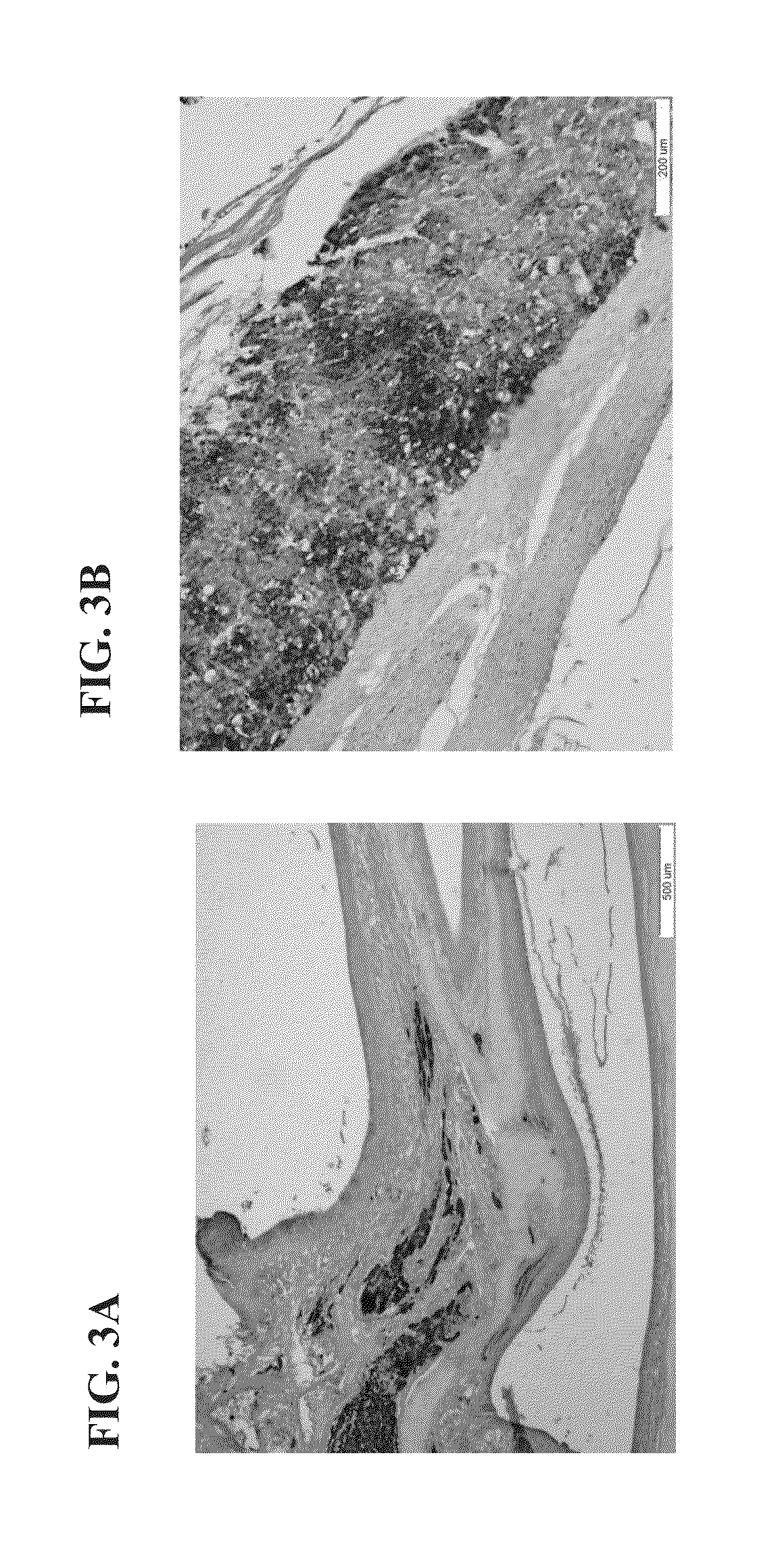Transplantation of cells into the nasal cavity and the subarachnoid cranial space
a technology of subarachnoid cranial space and subarachnoid cavity, which is applied in the direction of plant growth regulators, biocide, diagnostics, etc., can solve the problems of affecting the long-term outcome and affecting the long-term effect of islet transplantation into the liver. , to achieve the effect of preventing the adhesion of cell aggregates
- Summary
- Abstract
- Description
- Claims
- Application Information
AI Technical Summary
Benefits of technology
Problems solved by technology
Method used
Image
Examples
example 1
Transplantation of Insulin-Producing Beta Cell Line (Ins-1) into PNS of Diabetic Rats
[0195]Materials and Methods
[0196]Inbred Lewis rats (males, 270-280 g) were used as recipient for insulinoma cell (INS-1) transplantation. Insulin dependent diabetes was induced by iv injection of streptozotocin (STZ) at 85 mg / kg body weight. This dose of STZ results in a stable and spontaneously irreversible diabetes in Lewis rats. Rats were pretreated with 10 mg / kg cyclosporine A (CyA) 2 days before transplantation followed by a daily dosage of CyA. One week after STZ injection, about 30×106 INS-1 cells were transplanted (Tx) into the PNS of diabetic rats.
[0197]Due to the relatively small rat PNS volume, noninvasive cell delivery into the rat PNS is complicated. (The total volume of rat PNS is ˜50 mm3 compared to a very large human PNS occupying ˜60-80 cm3 space). Thus, a simple surgical procedure was used and recipient animals were anesthetized with ketamine / xylozine, followed by a 0.5-cm longitud...
example 2
Islet Transplantation in a Subarachnoid Cavity Surrounding Olfactory Bulb of Diabetic Rats
[0201]In this example, the present inventors studied the different parameters of glucose homeostasis and islet morphology following islet transplantation in a subarachnoid cavity of diabetic rats. This transplantation procedure enabled the assembly of grafted islets directly onto the glomeruli of the olfactory bulb.
[0202]Materials and Methods
[0203]Chemicals:
[0204]The CMRL and RPMI 1640 culture media, Hanks balanced saline solution (HBSS), fetal calf serum (FCS), penicillin, streptomycin, and other reagents for tissue culture were obtained from Biological Industries (Beit Haemek, Israel); Collagenase NB8 from Serva (Heidelberg, Germany); Bovine serum albumin (BSA), bovine DNAse, streptozotocin (STZ) and histopaque were acquired from Sigma-Aldrich (St Louis, Mo., USA); Dithizone (DTZ) was obtained from Merck (Darmstadt, Germany). Rat C-peptide ELISA kit was purchased from Mercodia AB (Uppsala, Sw...
PUM
| Property | Measurement | Unit |
|---|---|---|
| diameter | aaaaa | aaaaa |
| concentrations | aaaaa | aaaaa |
| volume | aaaaa | aaaaa |
Abstract
Description
Claims
Application Information
 Login to View More
Login to View More - R&D
- Intellectual Property
- Life Sciences
- Materials
- Tech Scout
- Unparalleled Data Quality
- Higher Quality Content
- 60% Fewer Hallucinations
Browse by: Latest US Patents, China's latest patents, Technical Efficacy Thesaurus, Application Domain, Technology Topic, Popular Technical Reports.
© 2025 PatSnap. All rights reserved.Legal|Privacy policy|Modern Slavery Act Transparency Statement|Sitemap|About US| Contact US: help@patsnap.com



